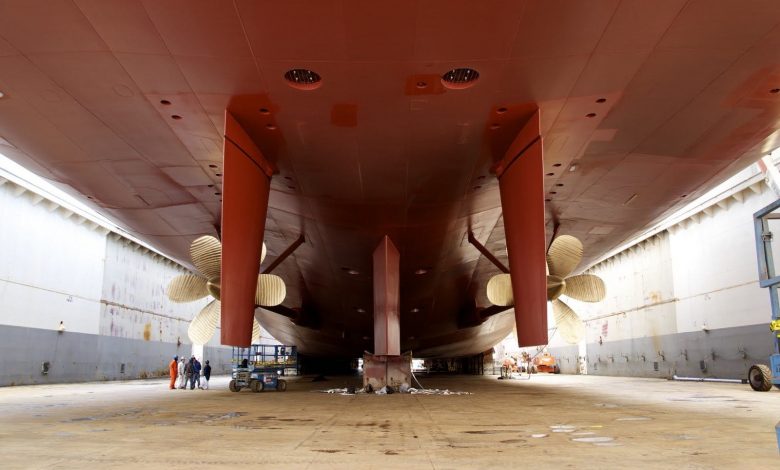Repair yard capacity for engine retrofits questioned

With many shipowners looking to follow the lead set by Maersk in pursuing engine retrofits to comply with stricter environmental rules kicking in by 2030 there is debate brewing about available shipyard capacity for the complex operations required.
Maersk announced in June another industry first that will see the Danish liner giant retrofit one of its ships to methanol dual-fuel with a host of other owners now looking at doing similar.
Class society Lloyd’s Register (LR) has just published a 69-page engine retrofit report in which it argues a lack of yard capacity and capability could compromise the maritime industry’s retrofit ambitions.
A maximum addressable retrofit market of 9,000 to 12,900 large merchant vessels was identified up to 2030 in the report, after which it is anticipated that all vessels will be built with net-zero or near-zero carbon fuels capability.
“In all likelihood only a small number of these vessels will eventually be retrofitted as the business case for converting older vessels (beyond ten years) and smaller vessels will likely remain challenging,” the report noted.
Fuel retrofits are more complex than most projects undertaken by repair yards, the study made clear. Converting the engine itself is a relatively straightforward process of installing prefabricated engine components.
“Introducing these elements to an existing ship, designed with an entirely different fuel use in mind, requires skills that cannot always be taken for granted at repair yards, where the focus has traditionally been on restoring vessels based on an original design,” the report pointed out.
LR has identified a group of around 15 yards capable of handling alternative fuel retrofits. Allowing a 60-day conversion period, these yards could be capable of handling up to 308 conversions in total each year.
“Comparing this against the number of potential retrofit candidates for methanol and ammonia, it is clear that capacity would need to be increased dramatically to fulfil potential demand as interest in conversions increases,” the report stated.
Another factor for consideration in understanding capacity for retrofit projects is slot availability in repair yards. Repair capacity is already constrained, according to LR, while the authors of the report warned there were other constraints on the supply chain with engine builders needing to balance the demand for newbuild engines with the growing demand for engine retrofit packages.
According to the European Maritime Safety Authority the total cost for retrofitting to an ammonia-fuelled ship, equipped with a 10-16 MW two-stroke engine will be $10m to $13m, depending on the type and size of the vessel, original engine and especially the number of retrofits being undertaken.
Dr Tristan Smith, associate professor in energy and shipping at UCL Energy Institute, has argued the potential for engine retrofits among today’s global merchant fleet is “thousands of ships per year”.
Smith and his team submitted a paper to the International Maritime Organization on the matter discussing the costs involved compared to using more expensive drop-in fuels or scrapping.
“Retrofit is highly attractive,” Smith told Splash earlier this year, adding that his team tested the shipyard capacity for the rates of retrofit and found, unlike this week’s LR report, there are no constraints.
MAN Energy Solutions spokesperson Pádraig Kellehe told Splash Extra earlier this year vessels whose original value was higher than $50m make for retrofit candidates since a full dual-fuel retrofit project for cheaper vessels would be costly compared to building a new vessel with dual-fuel engines from scratch. This is because the cost of retrofitting, which includes the fuel storage and fuel supply system, ranges between $5m and $15m.
“Typically, good candidates for dual-fuel retrofits are containerships with over 5,500 teu, tankers with over 50,000 dwt, bulkers with 160,000 dwt, LPG carriers with over 38,000 cu m, and larger modern roro vessels and PCTC carriers,” Kelleher said.

